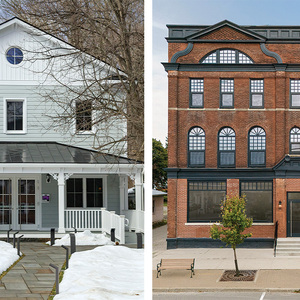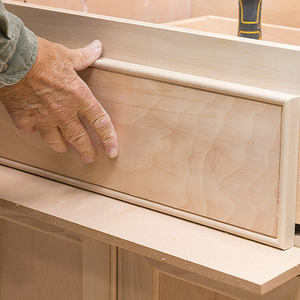*
I am interested in heating with the Polaris Water Heater for both Domestic hot water and radiant panel Home heat. However I don’t like the mixing of drinking water with the home heating system. Anyone have any suggestions on the most effective way to do this through a heat exchanger. And which type of heat exchanger would you reccomend
Discussion Forum
Discussion Forum
Up Next
Video Shorts
Featured Story

Spray foam is a great invention, but it's not always necessary.
Highlights
"I have learned so much thanks to the searchable articles on the FHB website. I can confidently say that I expect to be a life-long subscriber." - M.K.
Fine Homebuilding Magazine
- Home Group
- Antique Trader
- Arts & Crafts Homes
- Bank Note Reporter
- Cabin Life
- Cuisine at Home
- Fine Gardening
- Fine Woodworking
- Green Building Advisor
- Garden Gate
- Horticulture
- Keep Craft Alive
- Log Home Living
- Military Trader/Vehicles
- Numismatic News
- Numismaster
- Old Cars Weekly
- Old House Journal
- Period Homes
- Popular Woodworking
- Script
- ShopNotes
- Sports Collectors Digest
- Threads
- Timber Home Living
- Traditional Building
- Woodsmith
- World Coin News
- Writer's Digest


















Replies
*
On the hot water heater (HWH) side, you'll need a circulator pump to move HWH water through the heat exchanger (HX). This pump could be left running all the time for simplicity but ideally would be powered through relays so that it comes on when any zone wants heat.
On the other side of the HX, it is a normal RFH layout. Most common is a single pump and multiple zone valves each controlled off of a thermostat located in its zone. Alternately, each T-stat can turn an individual pump through a realy with one pump per zone.
Since the RFH side is a closed loop you must have an expansion tank to take up the volume difference between hot and cold water.
You could circulate gycol in the RFH side, but I wouldn't (and don't in my own house - I just use water). But if you use gycol (like in my garage for the radiant sidewalk), use propylene gycol (Sierra Brand auto antifreeze, for instance) since it is non-toxic. Very little ethylene gycol (Prestone) will kill a cat, dog or child.
Personal, I prefer the simplicity of a common system and feel that 1) all the RFH components (PEX tubing, copper pump, bronze pumps) are food-grade materials and 2) I don't drink or cook with hot water. Never do regardless of a house's plumbing. But to each their own.
I've been using flat plate heat exchanger that range in size from that of a small paperback to that of a pound cake. About $125-$150 where I live, but other report having to pay more. They are rated in BTU's but check what inlet-outlet temps are assumed in that rating, you may not have as much temperature differential. No downside to oversizing the HX. -David
*David,I also will not cook or drink with hot water but still prefer to separate the systems.I found some info on Flat Plate, Inc. and also Polaris HX's (not to be confused with Polaris HWH).Is there much of a drop off in efficiency when putting the HWH through a HX then into the radiant panels.Louis
*i I don't drink or cook with hot water. Never do regardless of a house's plumbing.Why?
*you've never seen what's inside a water heater after a few years. go attach a hose to the connection of your water heater and allow to drain into a clean container (turn off gas first). and this won't show you the solids left behind sitting on the bottom of the tank!brian
*While there is no lead in my own new house, there are other metals in the piping. Not as bad for you as lead, but why suck them down? The residence time is so much greater for the 40 to 60 gallon capacity of your hot water piping (including HWH) than for the 4 to 7 gallons of cold water piping, that hot water has both 1) more time and 2) a greater capacity in the form of higher solubilities for metals to dissolve metals from your piping.And any house built with copper pipe defore 1985 has lead in the solder. A very good reason to avoid the added exposure time and solubility of hot water.Better yet, have your hot and cold water tested to see if the combination of your water chemistry and your piping causes a problem or not. For quicker cooking I have an NSF-approved instant hot at the kitchen sink. -David
*Louis: no drop in efficiency of the HWH or of the radiant. No heat is released outside the building envelope because you included a HX. But if the HWH is only set to 130F then you get 110 out of the other side of the HX. That may not put out enough heat from the RFH in cold weather. So you crank the HWH. Now there is a potential scald hazard. Solution: A $70 tempering valve on the output of the HWH (to the house, not towards the HX). The tempering valve can be set to 120 or 115 or whatever is safest but hto enough. This approach also avoids the temperature variation of newer HWHs that have a large hysterisis than HWH of old. And it lets you store more BTUs for when you have a full house. It does drop your HWH efficiency a bit to crank the setting so don't crank it more than you need to, when you need to (high in very cold weather and/or with many houseguests, respectively). -David
*David,Thanks for that advice. It is just what I was suspecting about having to install the mixing valve so the Home Heat can have a higher temp. I'm glad to hear there is no loss of efficiency going through the HX. I also wondered about the loss of efficiency by storing the water in the HWH at the higher temp, but in the super insulated models such as Polaris I didn't think it would be to great.What about about mineral build-up in the HX after long periods of non-use in summer. And the chemicals to backwash it, are they especially toxic, how often do you need to backwash? Also I'm figuring there's a way to bypass heating system and go directly to Domestic production in non-heating months, thereby lowering water temp...Louis
*Louis, Check this out for additional info:http://www.jlconline.com/jlc/archive/energy/water_heater_heat/page3.html
*Mongo,Great article, thanks.I understood some codes require isolation of Domestic and Heat, however I didn't realize the Flat Plate HX are not good enough for some.
*Actually a good, not great article, IMHO. The diagram is helpful and his thoughts about single-wall versus double-wall HXs are accurate.But a few details in that diagram are wrong. The HX should be installed with countercurrent flow, not co-current flow. If installed as shown, you'd need much higher temps in the HWH to acheive adequate RFH temps. Just follow the IN/OUT marking on the HX and you'll be fine.You're welcome to put an expansion tank on the HWH side, but why? I let the city water main or well-pump storage tank serve that purpose.You can set up an automatically refilling system as shown in the diagram but I prefer to plumb without any leaks and therefore no need for continual refilling. If the pressure drops, I think there is a problem to be fixed. But a plumber could avoid some call-backs for a small drip that wouldn't otherwise be noticed if the RFH loop keeps refilling itself.The expansion tank on the RFH side is definitely needed.For clarity's sake, the diagram shows only a single zone. As you go to multiple zones, there needs to be multiple pumps (or zone valves) and relays to turn the HWH circ pump on when any of the zones want water. -David